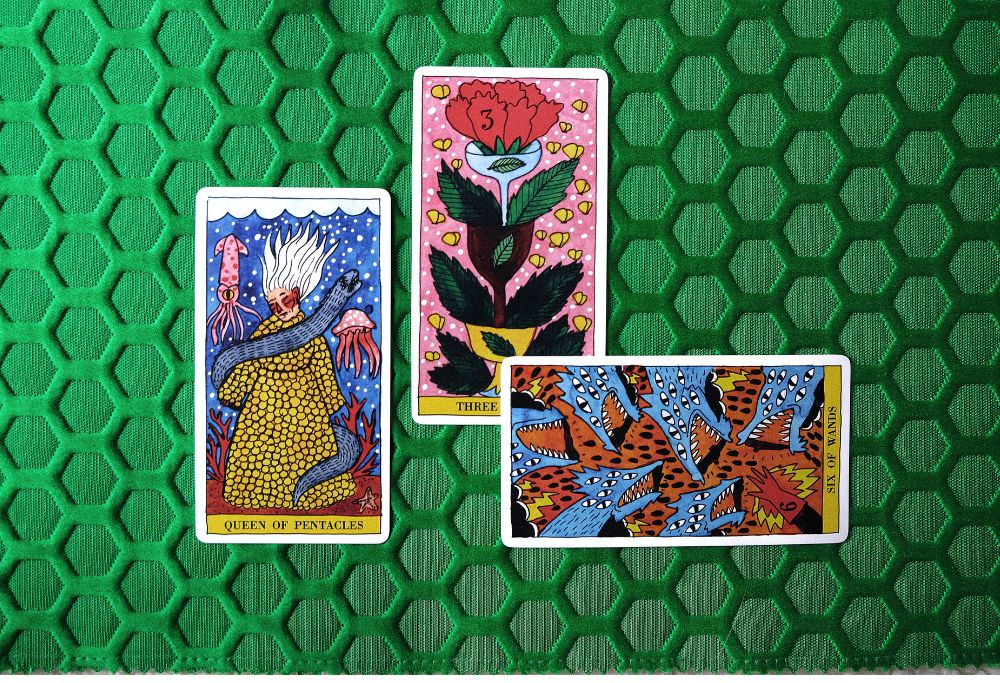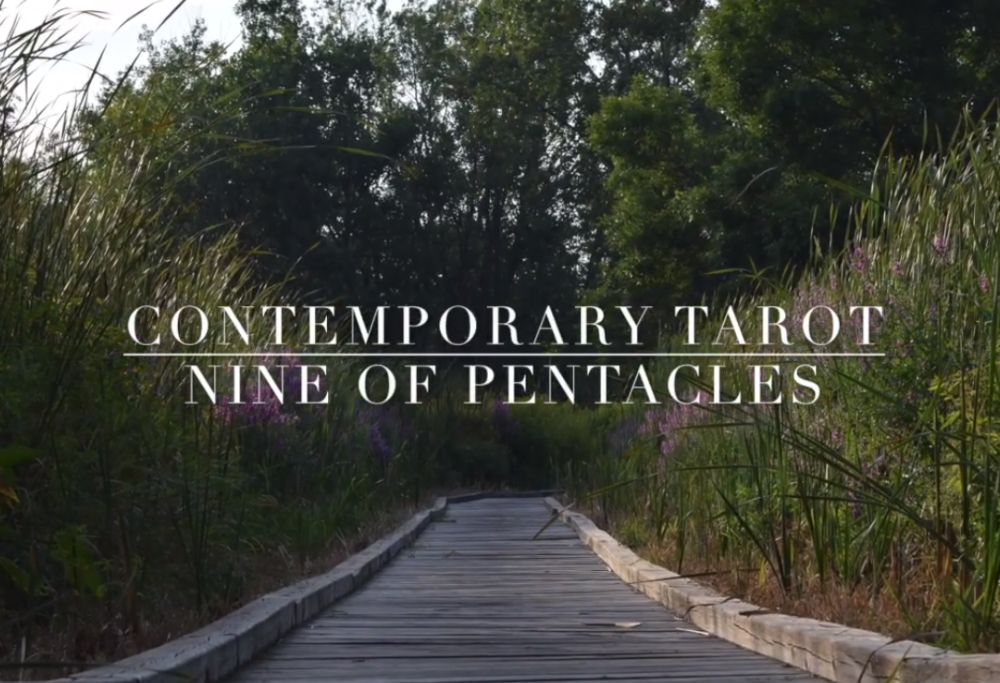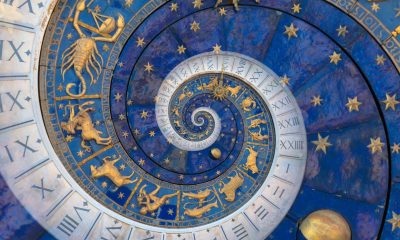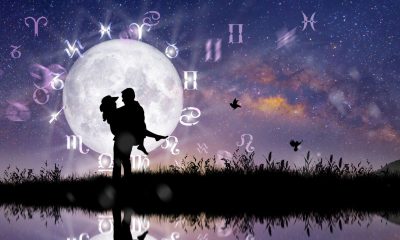Astrology
[Evolution of Human Behavior] Astrology and Influenza

Although Corona-19 is extreme in 2020, influenza was the most serious public health infection crisis a year ago. Influenza causes nearly 400,000 deaths annually on average. People over the age of 65 are particularly vulnerable. Every year, influenza injures 200,000 people in the United States alone, leading to the deaths of approximately 36,000. The 1918 Spanish Flu, which killed approximately 50 million people, was brought on by influenza. By the end of the previous year, only two pandemics had been declared by the World Health Organization (WHO), the first being the Hong Kong flu in 1968 and the second being the swine flu in 2009. Influenza is to blame for everything.
People pondered the causes of the influenza pandemic prior to the discovery of the virus. Additionally, individuals noted the unusual star movement. Sagittarius and Capricorn always stood tall when looking up at the sky when an influenza epidemic spread and killed a lot of people.
Stars and humans Influenza’s etymology is a mystery, but it appears to be a zoonotic disease that spread to humans through the domestication of poultry. Chickens and ducks are the vectors through which avian influenza enters humans. A significant obstacle for viruses is the process of adjusting to a new species, specifically the human body. It will probably fail. However, “fortunately” there would be a man who adapted to the new species as the population grew, the number of livestock increased, and humans and livestock came into frequent contact. It is from before the Neolithic.
There were definitely influenza epidemics in areas with a lot of people before 6000 B.C. Hippocrates described a disease with flu-like symptoms in the fourth century BC. As people settled in one area and began farming and herding, influenza spread.
As pioneers from Western Europe explored the Americas, a large number of Native Americans perished. It was probably brought on by a pandemic of influenza in 1493. Columbus brought influenza to the New World for the first time. He arrived in America—specifically, the Antilles—in 1492, so it happened in a single year. It is truly regrettable that Native Americans suffered such a tragic fate as a result of an unanticipated disaster. However, the Old World has actually been doing it for thousands of years. We are all descendents of those who were lucky enough to escape the influenza pandemic.
Why this tragedy occurs repeatedly baffles me. Moreover, influenza was most prevalent during the winter. Additionally, another one occurred on a 12-month cycle. It was the constellations’ movement. The tilt of the axis of rotation and the distance from the sun both have an impact on the periodic climate changes that occur in the world of living things and cause a variety of phenomena. A little shrewd person might be able to figure out that the earth’s changes are linked to the movement of the sun, moon, and stars.
The Italian word influente, which means “influence,” is where the name “influenza” comes from. The ominous movements of the celestial bodies were cited as the cause of periodic influenza epidemics. By looking directly at the sky, one could “divide” changes on the ground. Astrology began at this point.
Sajumyeongri, or the sun, moon, and stars in the East, is also a form of astrology. This is ultimately due to the fact that saju is a mark associated with the cyclical movement of time. The moon and the sun were the most significant. It’s easy for anyone to guess where it is. When farming, fishing, and sailing first became popular among humans, this is the beginning of civilization. The movement of the sun and moon was connected to the transitions of day and night, seasons, and tides.
This is a fallacy of the circular argument. Why is winter approaching? due to the fact that the year is becoming shorter. Why are years becoming shorter? since it’s winter. In fact, there is nothing to this kind of evidence. It did, however, appear to “explain” something. I started looking up at the sky after I stopped sleeping at night. There is also a job in which one only looks at the sky to survive. the beginning of astronomy.
Although he was actually an astrologer, Johannes Kepler, who lived in Germany in the 17th century, is remembered as a great astronomer. He believed that the human world could be directly affected by changes in the celestial bodies. The motions of the celestial bodies had an impact on the soul of the earth, which had its own soul. The human soul was also. This is due to its clay construction. Naturally, Kepler attempted to establish astrology through mathematical explanations and scientific observations. Astrology was absurd to him. “Astrology is the miserable daughter who feeds her mother, who is called astronomy,” he even made fun of himself. Astronomers appeared to be a poor profession even at that time.
The sky contains more than just the sun and moon. Five planets exist. Mercury, Venus, Mars, Jupiter, and Saturn are them. It goes by Ohseong. By adding the month to the day, it means the year and the month, and it is a word that describes the day of the week. It began around the third century AD. The following are the weeks in Latin: Lunae is on Monday, Martis is on Tuesday, Mercurii is on Wednesday, Lovis is on Thursday, Veneris is on Friday, Saturn is on Saturday, and Solis is on Sunday (add dies after).
Everything in the world began to be divided into five categories beginning with the five planets. Gold, earth, water, iron, fire, wood, and earth all have direct ties to the five colors black, white, red, blue, and yellow, respectively. Each is connected to the little finger, ring finger, middle finger, index finger, and thumb and represents the five directions—north, west, south, east, and middle. This continues indefinitely. Ear, nose, mouth, tongue, five eye holes, five hearts of thoughts, kidneys, lungs, heart, liver, and five spleen organs, and five animals: chestnuts, peaches, apricots, plums, pig, chicken, sheep, dog, cow, and jujubes Even the four seasons were extended to five: The addition of an imaginary element known as ether to the four elements—water, fire, earth, and air—created the five elements—winter, autumn, summer, spring, and early fall. Although it seems a little far-fetched, not a lot of academics believed in the existence of ether even a century ago.
development of astrology Astrology, which was based on the sun, moon, and five stars—or planets, to be exact—didn’t forget about the “little guy.” There were a lot of stars in the sky, but only a few of them made a good constellation. The 12th palace is the zodiac. It is a custom that dates back to ancient Babylon.
30 degrees separate the sun’s circular orbit around the vernal equinox. all 360 degrees in all. Moreover, to affix twelve constellations to each. However, the sun, moon, and five planets have nothing to do with the stars in the sky. The constellation’s position cannot be divided precisely by 30 degrees. It was brought in the right way. Additionally, the earth’s axis rotates continuously for approximately 26,000 years. referred to as precession. Therefore, the position of the constellation changes even after hundreds of years. For instance, Magal, or a person born on January 1st, receives a Capricorn horoscope. Sagittarius, on the other hand, can be seen in the night sky on January 1st. The vernal equinox ought to begin with either Aries or Aries, but it actually begins with Pisces.
When the International Astronomical Union established the boundaries of the constellations in the 1930s, a new constellation was also added to the ecliptic. between December 17 and November 30. The bow is also known as the 13 palaces because it only takes 18 days. It has twelve constellation points that are precisely divided by 30 degrees, making it a serpentine shape. However, if it is based on the 13 signs of the zodiac, it is determined by the constellations that are actually floating in the sky. The constellations vary in their relative sizes. There are large and small constellations. As a result, the number of birthdays associated with each constellation also varies. The constellations used in ancient astrology, the constellations used today, and their respective sizes are all distinct. There appears to be no room for error in astrology, but something seems arbitrary.
Regardless, as these 12 or 13 signs were added, astrology became more complicated. twelve constellations, five planets, the sun, and the moon. The relationships between the various objects and what they represent are also added. Sexter, Square, Thorin, Opposition, and Conjunction are the states where the angle of action is 60 degrees, 90 degrees, 120 degrees, 180 degrees, and 0 degrees around the Earth, respectively. Each planet’s power strengthens, counters, harmonizes, or even fights in this so-called aspect. There is also the idea of a house, which is a reference to the constellations that were visible on the eastern and western horizons when a person was born. It is to extend the birthday by one hour. It begins to resemble the saju quite a bit at this point.
In addition, it does not end here. There were initially five planets, but it was later discovered that there were additional ones. Pluto, Neptune, and Uranus. In 1781, 1846, and 1930, it was first observed or reported. Therefore, divination in contemporary astrology uses three planets—quite modern! However, Pluto lost its status as a planet in 2006. The astrological community’s reaction to this is unknown.

Astrology
Archetypal Lovers: Exploring the Timeless Romantic Pairings

Introduction
Love has been a timeless and universal theme in human culture, and throughout history, various archetypal lovers have captured our imaginations. These iconic romantic pairings have been depicted in literature, art, and mythology, resonating with people across generations. In this article, we will delve into the concept of archetypal lovers, exploring their significance, characteristics, and enduring appeal.
1. The Definition of Archetypal Lovers
Archetypal lovers are recurring themes or patterns in romantic relationships that embody deep and fundamental human desires and emotions. These patterns are embedded in our collective unconscious and are reflected in the stories we tell about love.

2. The Origin of Archetypes in Love
Archetypes of love can be traced back to ancient myths and folklore, where certain romantic pairings emerged as powerful symbols of human yearnings and experiences.
3. The Hero and the Damsel in Distress
One of the classic archetypal lovers is the hero and the damsel in distress. The hero, often depicted as brave and noble, rescues the damsel in distress, who is in a vulnerable or perilous situation. This archetype signifies the human desire for protection and the triumph of good over evil.
4. The Star-Crossed Lovers
The star-crossed lovers, as popularized by William Shakespeare’s “Romeo and Juliet,” represent love that is thwarted by external circumstances, such as feuding families. This archetype embodies the intensity of young love and the tragic consequences of societal barriers.
5. The Forbidden Love
Forbidden Love explores the allure of relationships that defy societal norms or face opposition from others. This archetype delves into the complexities of human emotions and the courage to pursue love despite adversity.
6. The Opposites Attract
The opposites-attract archetype portrays the magnetic pull between individuals with contrasting personalities, backgrounds, or beliefs. This pairing highlights the idea that differences can complement each other and lead to personal growth.
7. The Eternal Soulmates
Eternal soulmates are two individuals destined to be together throughout multiple lifetimes. This archetype symbolizes the profound connection and spiritual bond that transcends time and space.
8. The Transformational Love
Transformational love involves personal growth and change through the influence of a romantic partner. This archetype emphasizes the power of love to inspire positive transformations in individuals.
9. The Sacrificial Love
Sacrificial love explores the willingness to make significant sacrifices for the well-being and happiness of a loved one. This archetype demonstrates the depth of devotion and selflessness in romantic relationships.
10. The Unrequited Love
Unrequited love represents the pain and longing of loving someone who does not return the same feelings. This archetype delves into themes of rejection, heartbreak, and unfulfilled desires.
11. The Love Triangle
The love triangle involves three individuals entangled in a complex web of emotions, creating tension and drama in the narrative. This archetype delves into themes of jealousy, rivalry, and difficult choices.
12. The Mature Love
Mature love is characterized by a deep emotional connection, understanding, and mutual respect between partners. This archetype explores the evolution of love as it matures over time.
13. The Love Beyond Time and Space
Love beyond time and space transcends physical limitations and explores the idea of connections that exist beyond the earthly realm. This archetype delves into themes of destiny and cosmic love.
14. The Archetypal Lovers in Contemporary Media
In modern storytelling, archetypal lovers continue to captivate audiences in various forms, from books and films to TV shows and social media. These timeless themes persist because they tap into our deepest desires and emotions.
15. Conclusion
Archetypal lovers hold a special place in human hearts, as they represent the universal yearnings and experiences surrounding love. From the hero and the damsel in distress to the love beyond time and space, these romantic pairings have left an indelible mark on our cultural consciousness.
Astrology
The Lover Archetype: Understanding the Depths of Passion and Connection

Introduction
Love is a complex and multifaceted emotion that has captivated humanity since time immemorial. In the realm of psychology and mythology, the concept of archetypes helps us understand the patterns and traits that define human behavior. One such archetype is “The Lover,” which embodies the essence of passion, connection, and desire. In this article, we will delve deep into the lover archetype, exploring its definition, significance, and how it manifests in various aspects of life.
Defining Lover Archetype
What is an Archetype?
Archetypes, as proposed by Swiss psychiatrist Carl Jung, are universal symbols and themes that exist in the collective unconscious of all human beings. They shape our thoughts, feelings, and actions, influencing how we perceive the world around us and interact with others. Archetypes are the blueprints of human behavior and hold great symbolic meaning.
Exploring the Lover Archetype
Lover Archetype represents an intense and passionate aspect of human nature. It is associated with the pursuit of love, beauty, and sensuality. Individuals embodying Lover Archetype are driven by deep emotions and yearn for profound connections with others and the world.
Common Traits of the Lover Archetype
People influenced by the Lover Archetype often exhibit traits such as empathy, sensitivity, and a heightened appreciation for aesthetics. They are romantic at heart, valuing emotional intimacy and cherishing the bonds they form with loved ones.

The Lover Archetype in Mythology and Literature
Examples of the Lover Archetype in Myths
Throughout mythological tales from various cultures, we encounter characters embodying Lover Archetype. From Greek mythology’s Eros, the god of love, to the alluring sirens luring sailors in the Odyssey, Lover Archetype takes many captivating forms.
Beloved Characters in Literature Exhibiting the Lover Archetype
In literature, Lover Archetype is evident in characters like Shakespeare’s Romeo and Juliet, who exemplify the intensity of love and its tragic consequences. Countless other novels and poems feature protagonists driven by the allure of passion and connection.
Lover Archetype in Psychology
Carl Jung’s Collective Unconscious and Archetypes
Carl Jung’s groundbreaking theory of the collective unconscious highlights the presence of archetypes in the human psyche. Lover Archetype is a vital component of this shared unconscious, shaping our relationships and emotional experiences.
Love and Attachment Styles
Psychologists study the impact of archetypes on love and attachment styles. Those influenced by the Lover Archetype may exhibit styles characterized by warmth, closeness, and emotional expression.
Impact of the Lover Archetype on Relationships
Understanding the Lover Archetype can shed light on the dynamics of romantic relationships. The desire for intimacy and connection can lead to fulfilling partnerships or, if unbalanced, create challenges.
Embracing Lover Archetype in Daily Life
Cultivating Self-Love and Self-Compassion
The journey of the Lover Archetype begins with self-love. Practicing self-compassion and acceptance allows individuals to form healthier connections with others.
Nurturing Romantic Relationships
For those influenced by the Lover Archetype, nurturing romantic relationships is essential. They can enhance intimacy by expressing their emotions and needs openly.
Embracing Passion in Hobbies and Interests
Lover Archetype often fosters a deep appreciation for beauty and creativity. Embracing passions in hobbies and interests can bring joy and fulfillment to life.
The Shadow Side of the Lover Archetype
Obsession and Possessiveness
Unbalanced expressions of Lover Archetype can lead to obsession and possessiveness, causing strain in relationships.
Fear of Abandonment
Individuals strongly influenced by the Lover Archetype may fear abandonment, influencing their behavior and decision-making.
Balancing Love and Independence
Finding a balance between the desire for love and maintaining individuality is crucial for personal growth and healthy relationships.
The Lover Archetype in Pop Culture
Iconic Movie Characters Representing the Lover Archetype
In popular culture, numerous movie characters embody the Lover Archetype, showcasing the beauty and complexity of love.
Musicians and Artists Embodying the Lover Archetype
Musicians and artists often draw inspiration from Lover Archetype, channeling their emotions into their creative works.
Finding Your Dominant Archetype
Reflecting on Your Traits and Desires
Understanding your dominant archetype, including the Lover, involves introspection and reflection on your emotions and desires.
Seeking Guidance from a Professional
A professional therapist or counselor can provide valuable insights into your archetypal inclinations and help navigate your emotional landscape.
Conclusion
Lover Archetype represents the profound human desire for connection, love, and beauty. As a symbol deeply ingrained in the collective unconscious, it influences our relationships, passions, and creative expressions. By embracing Lover Archetype with self-awareness and balance, individuals can forge meaningful connections, find joy in life’s aesthetics, and experience the transformative power of love.
Astrology
Nine of Pentacles Love: Embracing Independence and Deepening Connections

Introduction
Welcome to the world of tarot and love, where the cards can offer valuable insights into relationships and self-discovery. In this article, we will explore the significance of the Nine of Pentacles in love and how it can guide us in fostering meaningful connections and personal growth. Whether you’re single, in a relationship, or healing from past heartbreaks, the wisdom of the Nine of Pentacles in love can provide guidance and clarity on your romantic journey.

Understanding the Nine of Pentacles in Love
What are the Nine of Pentacles?
The Nine of Pentacles is one of the 78 cards in a traditional tarot deck, representing abundance, luxury, and self-sufficiency. It portrays a person surrounded by nature, symbolizing their independence and connection to the material world.
The Symbolism Behind the Card
Each element in the Nine of Pentacles in Love holds symbolic meaning, from the lush garden to the elegant clothing. Understanding these symbols can enhance our interpretation of the card’s significance in love and relationships.
The Tarot and Love
Before delving into the specifics of the Nine of Pentacles in Love, let’s explore how tarot cards, in general, can offer valuable insights and guidance in matters of the heart.
The Nine of Pentacles in Love
Explore the profound lessons the Nine of Pentacles in love offers to enrich your love life and personal journey.
Embracing Independence
Learn to celebrate your independence and embrace your own company before seeking a romantic partner.
Appreciating Your Own Worth
Understand your true value and worth, fostering healthier relationships with a solid foundation of self-love.
Finding Self-Sufficiency in Love
Discover the beauty of interdependence and how two self-sufficient individuals can create a strong bond.
Building Strong Foundations
Learn how the Nine of Pentacles in love encourages you to build a solid foundation for a lasting and meaningful relationship.
Taking Time for Yourself
Explore the importance of self-care and finding time for personal growth, even within a committed relationship.
Nurturing Relationships
Discover how the Nine of Pentacles in love emphasizes the significance of nurturing love and building emotional intimacy.
Signs and Aspects
Examine the Nine of Pentacles in love connections to various signs, elements, and astrological aspects.
Nine of Pentacles and Compatibility
Discover the compatibility of this card with different zodiac signs and its implications on relationships.
Reversed Card Interpretation
Understand the reversed position of the Nine of Pentacles and its potential impact on love and romance.
Upright Card Interpretation
Explore the upright position of the Nine of Pentacles and its positive influence on relationships.
Astrological Associations
Uncover the astrological signs associated with the Nine of Pentacles and how they can shape romantic dynamics.
Numerology and the Nine of Pentacles
Learn about the numerological significance of the number nine and its impact on this tarot card’s meaning in love.
Elemental Connection
Discover the Earth element’s influence on the Nine of Pentacles and its representation of grounded love.
Healing from Past Relationships
Find guidance on healing and growing from past relationship experiences to open your heart to new love.
Letting Go of Baggage
Explore the importance of releasing emotional baggage to welcome fresh and meaningful connections.
Learning from Past Mistakes
Understand how past relationship experiences can serve as valuable lessons for future romantic endeavors.
Fostering Emotional Growth
Discover how healing from past hurts can lead to emotional growth and healthier relationship patterns.
Opening Up to New Love
Learn to be open to new romantic opportunities without being hindered by past disappointments.
Reconnecting with Yourself
Explore the journey of reconnecting with your true self after experiencing heartbreak.
Navigating Long-Distance Relationships
Gain insights and valuable tips for sustaining a loving connection when distance separates partners.
Communication in Absence
Discover effective communication strategies to maintain intimacy and connection in a long-distance relationship.
Trust and Security
Explore ways to build and maintain trust and security despite physical distance.
Planning Visits and Shared Goals
Learn how to plan visits and set shared goals to keep the relationship strong.
Managing Jealousy and Insecurities
Address jealousy and insecurities that may arise in long-distance relationships and find healthy ways to cope.
Sustaining Emotional Intimacy
Discover how to sustain emotional intimacy and closeness despite the physical distance.
Making It Work: Tips and Advice
Practical tips and advice for making a long-distance relationship thrive.
Cultivating Self-Love and Confidence
Explore the importance of self-love and confidence in attracting and maintaining fulfilling relationships.
The Power of Self-Affirmations
Discover the transformative impact of positive self-affirmations on self-love and self-esteem.
Prioritizing Self-Care
Learn the significance of self-care in fostering a healthy and confident mindset.
Seeking Personal Growth
Explore the journey of personal growth and self-improvement in the context of love.
Overcoming Insecurities
Address common insecurities and learn strategies to overcome them in relationships.
Embracing Your Authentic Self
Understand the value of embracing your authentic self and letting go of pretenses in love.
The Nine of Pentacles and Marriage
Explore the dynamics of the Nine of Pentacles in the context of marriage and long-term commitment.
Creating a Strong Partnership
Learn how to build a strong partnership based on mutual respect and admiration.
Balancing Independence and Togetherness
Discover the art of balancing individual independence with togetherness in a marriage.
Financial Considerations
Address financial considerations and planning for a secure future together.
Preparing for Commitment
Explore the process of preparing for commitment and discussing future plans with your partner.
Supporting Each Other’s Goals
Learn how to support and encourage each other’s personal and professional goals.
Coping with Heartbreak and Loss
Find solace and guidance in coping with heartbreak and navigating the healing process.
Embracing Grief and Healing
Explore the healing process and the importance of embracing grief after a breakup or loss.
Seeking Support from Loved Ones
Discover the power of seeking support from friends and family during challenging times.
Focusing on Personal Growth
Understand the transformative potential of focusing on personal growth after heartbreak.
Allowing Yourself to Love Again
Learn to open your heart to love again and take a chance on new relationships.
Finding Love as a Single Parent
Explore the unique journey of finding love as a single parent and nurturing both parental and romantic roles.
Honoring Your Parenting Role
Discover the importance of honoring your role as a parent while seeking romantic connections.
Being Open to Love as a Parent
Explore the challenges and rewards of being open to love as a single parent.
Balancing Parenting and Dating
Learn how to balance parenting responsibilities with dating and building new relationships.
Communicating with Your Child(ren)
Explore the importance of open communication with your child(ren) about dating and relationships.
Introducing Your Partner to Your Child
Discover valuable tips for introducing your new partner to your child(ren) in a positive and healthy way.
Conclusion
In the journey of love, the Nine of Pentacles in love teaches us the significance of embracing our independence, finding self-sufficiency, and nurturing our relationships. Whether you are seeking new love, healing from past heartbreak, or navigating a long-term commitment, the wisdom of the Nine of Pentacles in love can guide you toward a more fulfilling and love-filled life.
Remember, every step you take on this path is an opportunity for growth and self-discovery, allowing you to create lasting and meaningful connections with others.
-

 Astrology2 years ago
Astrology2 years agoThe Lover Archetype: Understanding the Depths of Passion and Connection
-

 Astrology3 years ago
Astrology3 years agoHow Do I Get My Ex Back?
-

 Astrology3 years ago
Astrology3 years agoWhat personality would suit each major arcana tarot card?
-

 Astrology2 years ago
Astrology2 years agoArchetypal Lovers: Exploring the Timeless Romantic Pairings
-

 Astrology3 years ago
Astrology3 years agoRecognizing Vesta in Astrology
-

 Astrology3 years ago
Astrology3 years agoThe Role of Astrology in Self Discovery: How it can help you understand yourself better
-

 Astrology3 years ago
Astrology3 years agoAre there any astrological relationship patterns?
-

 Astrology3 years ago
Astrology3 years agoThe connection between astrology and feng shui
